|
FOOD
IN-SECURITY
ABOUT - CLIMATE
- NATIONS -
HYDROGEN -
OCEAN PLASTIC
- WHALING
PLEASE
USE OUR
A-Z INDEX
TO NAVIGATE THIS SITE WHERE PAGE LINKS MAY LEAD TO EXTERNAL
SITES,
or: HOME
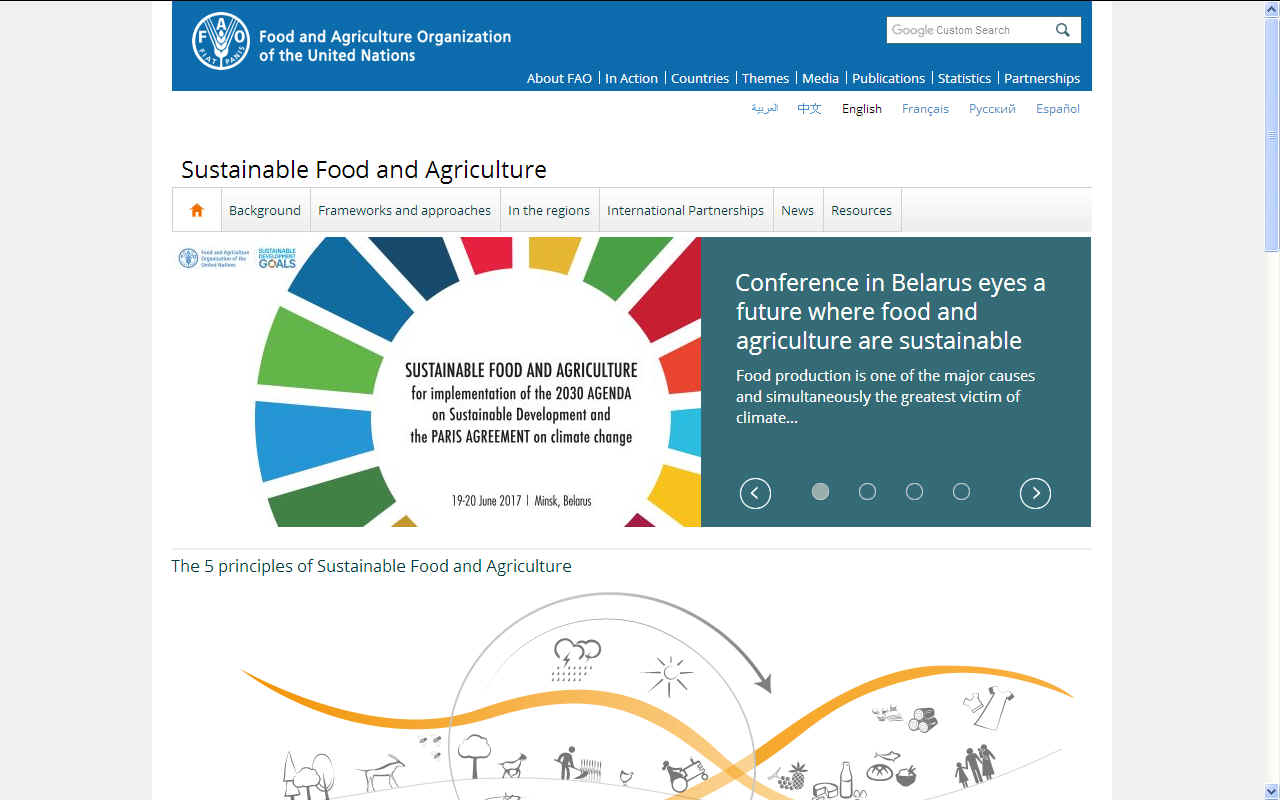
CHALLENGING
TIMES - Feeding the world securely into the future is one
of the major challenges facing mankind and one we must rise to
meet to avoid famine and suffering. The planet can only
generate so much food from base life forms that convert
sunlight into energy for plant growth, then to move up the food
chain as animals eat plants.
According
to the United
Nations Food and Agriculture Organization (FAO) the world’s population is predicted to increase to 9 billion people by 2050. Some of the world’s highest rates of population growth are predicted to occur in areas that are highly dependent on the agriculture sector (crops, livestock, forestry and
fisheries) and have high rates of food
insecurity. Growth in the agriculture sector is one of the most effective means of reducing poverty and achieving food security.
Innovative approaches are needed across the agriculture sector to increase productivity, conserve natural resources, and use inputs sustainably and efficiently. Such approaches will require the participation of smallholders, women, indigenous peoples and marginalized groups.
Competition over natural resources, such as land, water and oceans, is intensifying and in many places is leading to the exclusion of traditional users from resources and markets. Social and demographic changes in rural areas also affect the labour available for production. The increasing movement of people and goods, and changes in production practices, give rise to new threats from pests, diseases and invasive alien species.
Climate change reduces the resilience of production systems and contributes to natural resource degradation. The
agriculture sector is both a contributor to, and impacted by, climate change. Improved practices and reducing deforestation and forest degradation offer significant potential for
climate change adaptation and mitigation.
FAO’s vision for sustainable agriculture sector production systems requires integration across the sector and of social, economic and environmental considerations. It focuses on ways to ensure the transition to sustainable practices. FAO’s activities focus on:
* increasing resource use efficiency, to achieve higher productivity with reduced levels of inputs, while minimizing negative externalities;
*
managing ecological, social and economic risks associated with agricultural sector production systems, including pests, diseases and climate change;
*
identifying and enhancing the role of ecosystem services, particularly in terms of their effects on resource use efficiency and response to risks, as well as their contribution to environmental conservation; and
*
facilitating access to needed information and technologies.
Sustainable development: a dynamic process
Given that sustainable development is a process, not a singularly defined end-point to be achieved, it requires the development of technical, governance and financing frameworks for the broad range of local needs and contexts, that support agriculture sector producers and resource managers engaged in a dynamic process of innovation. The use of sustainable production practices and technologies implies a more holistic view of agriculture sector production and its connection with natural resources. Such practices include, for example, agroforestry systems, crop–livestock integration and crop–aquaculture production, with connections among them to promote the conservation and use of ecosystem services.
FAO is working on integrated approaches to production that will:
* support the development, sharing and adaptation of locally-relevant technologies, explore approaches for assessing impact and vulnerability and for planning adaptation, and focus on addressing economic, institutional and financing barriers;
* create enabling frameworks for economically-, socially- and environmentally-sound production systems that embody resource use efficiency, diversification, climate change adaptation and mitigation, ecosystem services and accessibility;
* strengthen international and national governance mechanisms and instruments relevant to sustainable resource use, including building capacity for participation in the negotiation and implementation of international instruments;
* build capacity to access and use data to support policy and planning decisions.

EASTBOURNE -
Right on our doorstep is an example of a beach that is underused for fishing, even
though there is a Fisherman's Agreement in existence and blue
growth is clearly on the agenda locally. This may change if a
home is found for new technology aiming for sustainable
fishing in Europe and Internationally. For example, the AmphiMax
beach launching and recovery system holds the potential to
make selective fishing
more attractive using modified SeaVax
boats, and as a bonus to climate considerations, these
boats are not dependent on diesel
fuels for operation. At the moment fishermen operate from the Sovereign
Harbor marina complex. Hastings, just a few miles further
east along the English
Channel is just the opposite, with fishing boats forming a
major part of the community.
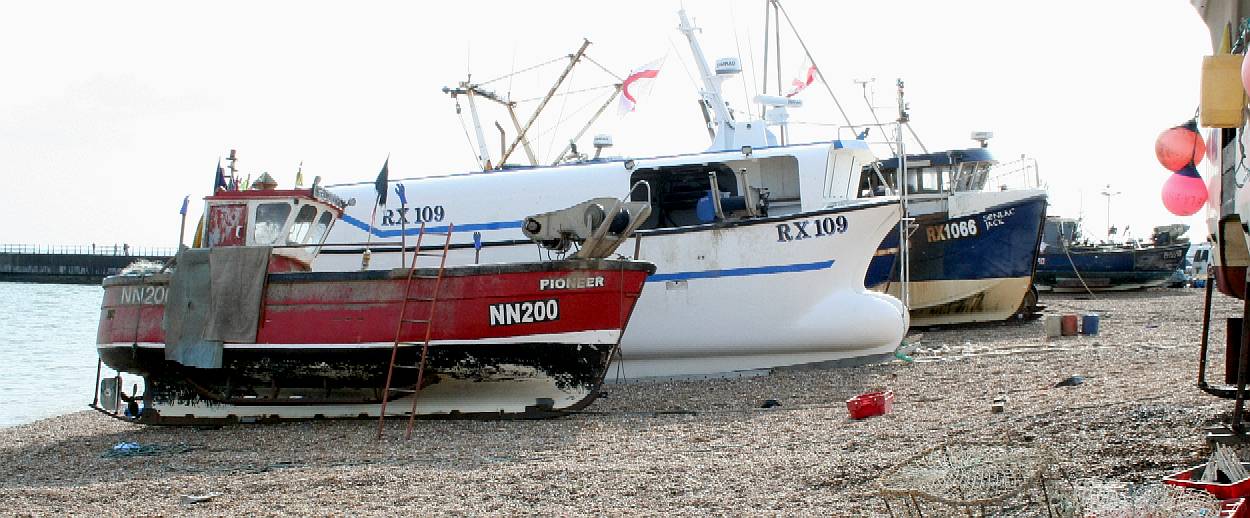
THE
STADE - The famous Sussex
beach has a steep slope lead in that is ideal for launching,
followed by a more gently inclined beach that is ideal for
beaching. What is so fascinating about the boats here is the
variety of designs all to tackle the awesome task of launching
a medium weight vessel from the beach and then recovering it -
as economically as possible. As part of our lighting
feasibility study, this is the place to start, to see how
hundreds of practical fisherman and marine engineers have
risen to the challenge. Copyright © May 29 2016, all rights
reserved. You will need permission from Bluebird
Marine Systems Ltd to reproduce this photograph.
MAIN
BLUE GROWTH AREAS
5.
Ocean Regeneration - cleaning our oceans to preserve the
resource and cleanse the toxic food chain
6.
Aquaculture - now generates around 50% of world produce,
mostly subject
to wild fish feed
7.
Ocean Energy - offshore wind and wave energy for clean
power
8.
Biotechnology - Identifying, harvesting and producing
medicines
9.
Coastal Tourism - To engage the public in ocean matters
and reduce air travel
10.
Green Ships - Cargo and cruise ships that are cleaner,
preferably zero carbon
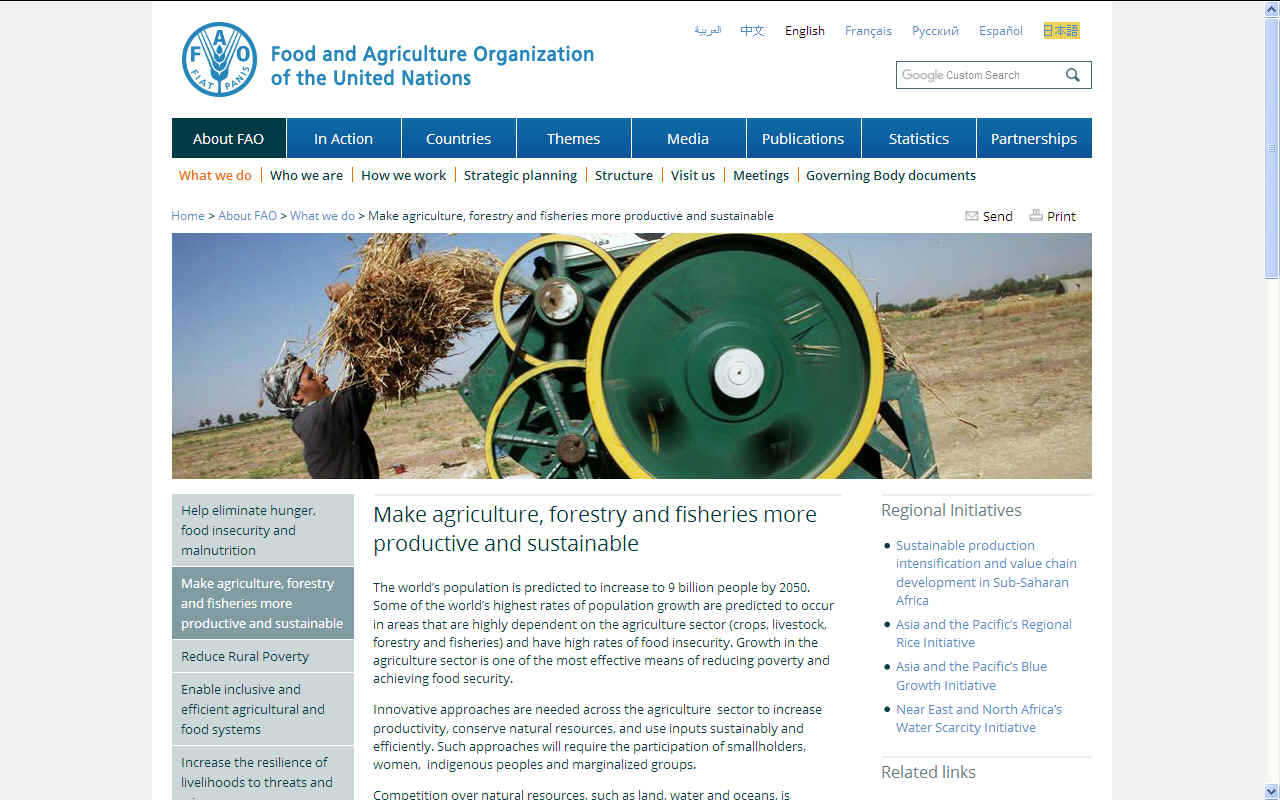
THE
UN's FIVE PRINCIPLES OF SUSTAINABLE FOOD PRODUCTION
1.
Improving efficiency in the use of resources is crucial to sustainable agriculture
Modifying current practices can do much to improve the productivity of many food and agricultural production systems.
This principle focuses on the engine of transformation. Further gains in productivity will still be needed in the future to ensure sufficient supply of food and other agricultural products while limiting the expansion of agricultural land and containing encroachment on natural ecosystems. However, while in the past efficiency has been mostly expressed in terms of yield (kg per hectare of production), future productivity increase will now need to consider other dimensions. Water and energy-smart production systems will become increasingly important as water scarcity increases and as agriculture will need to seek ways to reduce emission of greenhouse gas. This will impact on the use of fertilizers and other agricultural inputs.
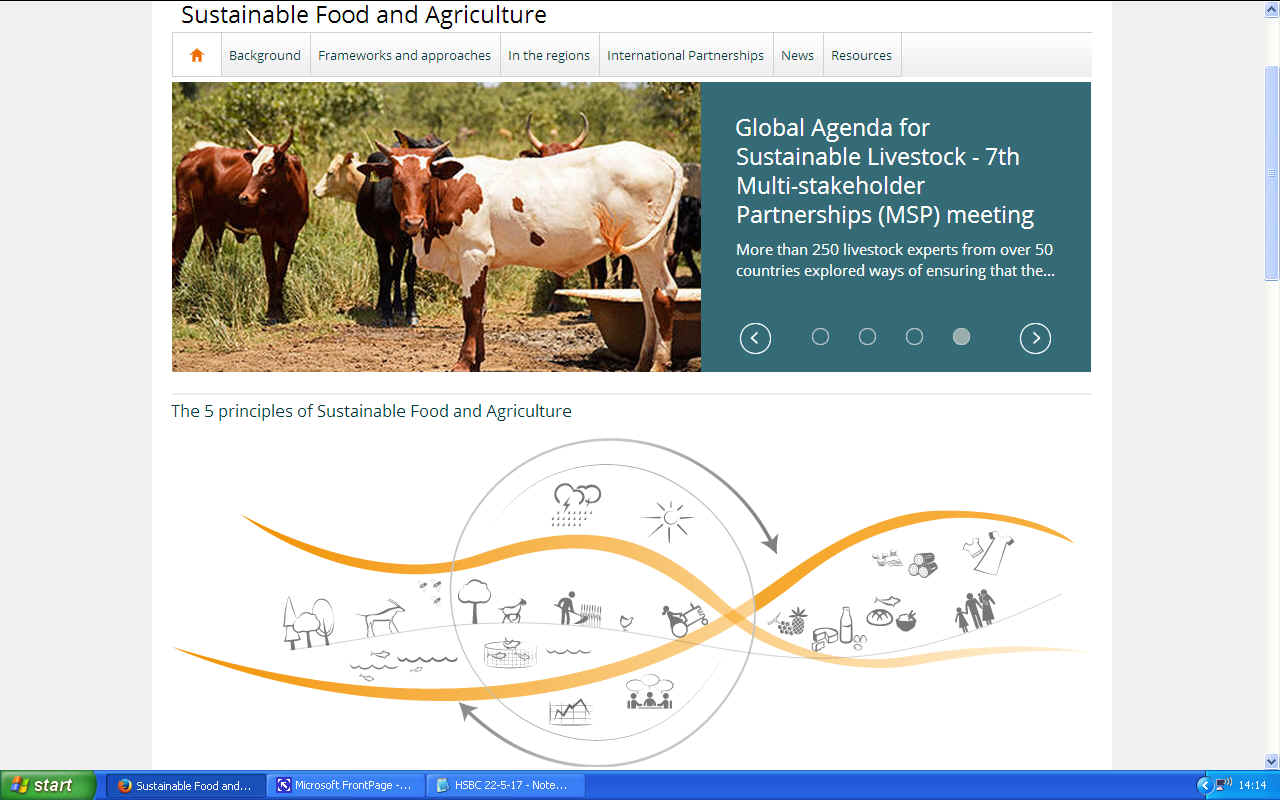
2.
Sustainability requires direct action to conserve, protect and enhance natural resources
* Food and agricultural production depends on natural resources and therefore the sustainability of production depends on the sustainability of the resources themselves. Much can be done to reduce negative impacts and enhance the status of natural resources.
* While intensification has positive effects on the environment through reduced agricultural expansion and subsequent limitation in encroachment on natural ecosystems, it also has potentially negative impact on the environment. The most widespread model of agriculture intensification involves intensive use of farm inputs, including water, fertilizers and pesticides. The same applies to animal production and aquaculture, with subsequent pollution of water, destruction of freshwater habitats, and destruction of soil properties. Intensification has also led to the drastic reduction of crop and animal biodiversity. Such trends in agricultural intensification are not compatible with sustainable agriculture and are a threat to future production.
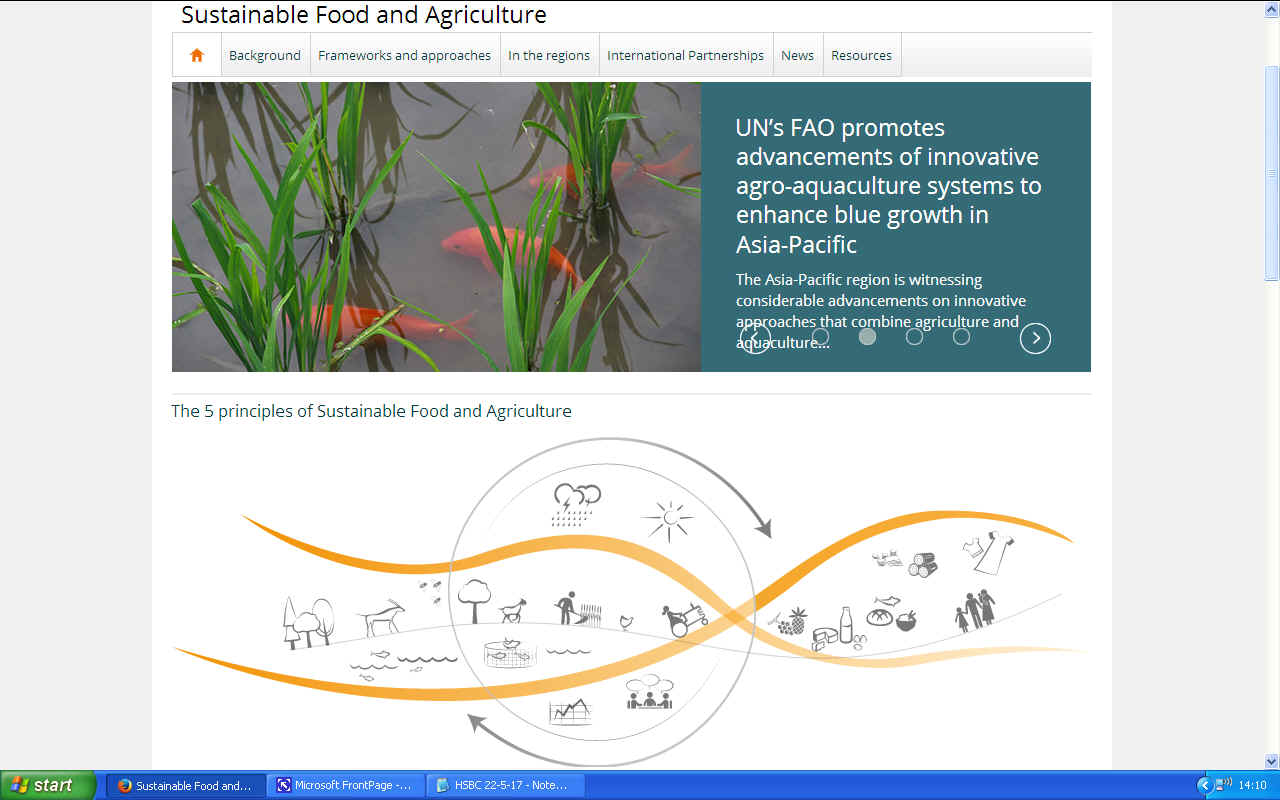
3.
Agriculture that fails to protect and improve rural livelihoods, equity and social well-being is unsustainable
* Ensuring that producers have adequate access to and control of productive resources, and addressing the gender gap, can contribute significantly to reducing poverty and food insecurity in rural areas.
* Agriculture is the most labor intensive of all economic activities. It provides, directly and indirectly, a source of livelihoods for rural households totaling 2.5 billion people. Yet, poverty is excessively associated with agriculture, and agriculture is among the riskiest types of businesses. Agriculture can only become sustainable if it provides decent employment conditions to those who practice it, in an economically and physical safe, and healthy environment.
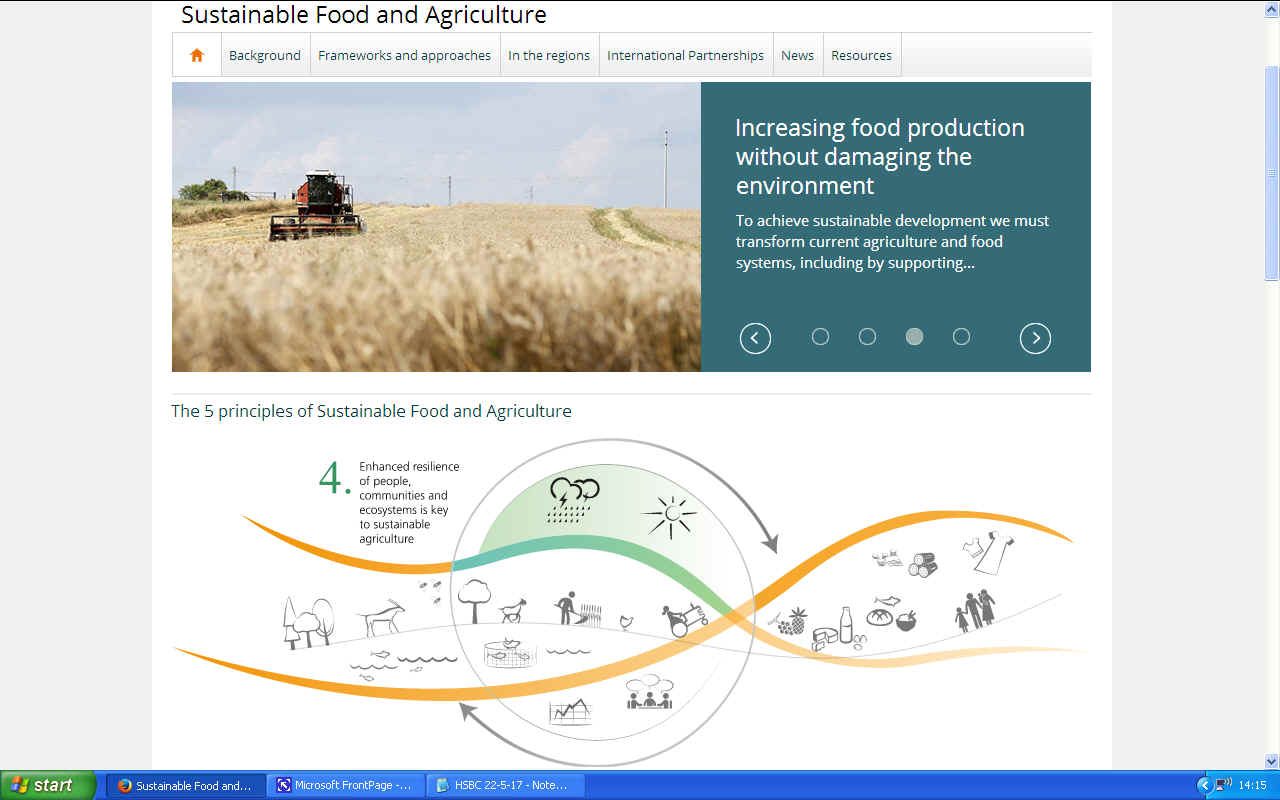
4.
Enhanced resilience of people, communities and ecosystems is key to sustainable agriculture
* Extreme weather events, market volatility and civil strife impair the stability of agriculture. Policies, technologies and practices that build producers’ resilience to threats would also contribute to sustainability.
* Several signals in the recent past have illustrated the risks that shocks can represent for agriculture, forestry and fisheries. Increased climate variability, whether associated or not to climate change, impact farmers and their production. On the other side, increased food price volatility impact both producers and consumers who don’t necessarily have the means to cope with them. Rather than reducing these shocks, increased globalization has probably favored their rapid transmission across the globe, with increasingly unpredictable impact on the production systems. Resilience therefore becomes central to the transition towards a sustainable agriculture, and must address both the natural and the human dimensions.
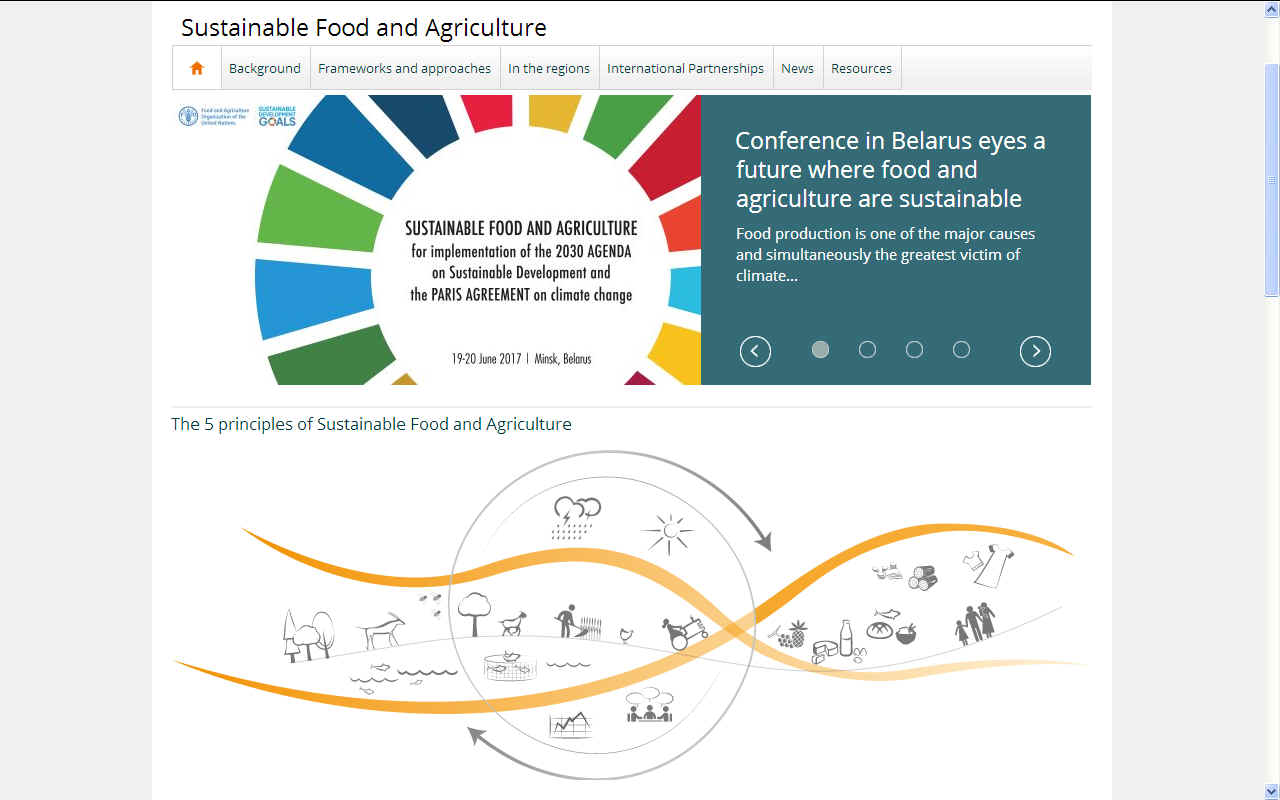
5.
Sustainable food and agriculture requires responsible and effective governance mechanisms
* The transition to sustainable production can only take place when there is the right balance between private and public sector initiatives, as well as accountability, equity, transparency and the rule of law.
* Mainstreaming sustainability into food and agriculture systems implies adding a public good dimension to an economic enterprise. Agriculture is and will remain an economic activity driven by the need for those practicing it to make profit and ensure a decent living out of its activities. Farmers, fisher folks and foresters need to be provided with the right incentives that support the adoption of appropriate practices on the ground. Sustainability will only be possible through effective and fair governance, including the right and enabling policy, legal and institutional environments that strike the right balance between private and public sector initiatives, and ensure accountability, equity, transparency and the rule of law.
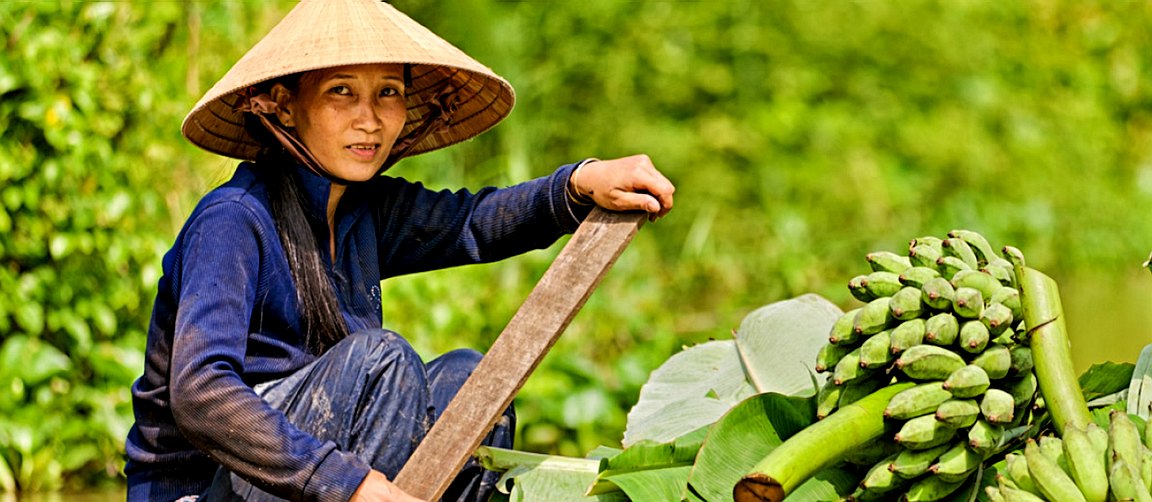
LINKS
& REFERENCE
http://www.fao.org/sustainability/en/
http://overfishing.org/
http://documents.worldbank.org/curated/en/2009/01/10298304/sunken-billions-economic-justification-fisheries-reform
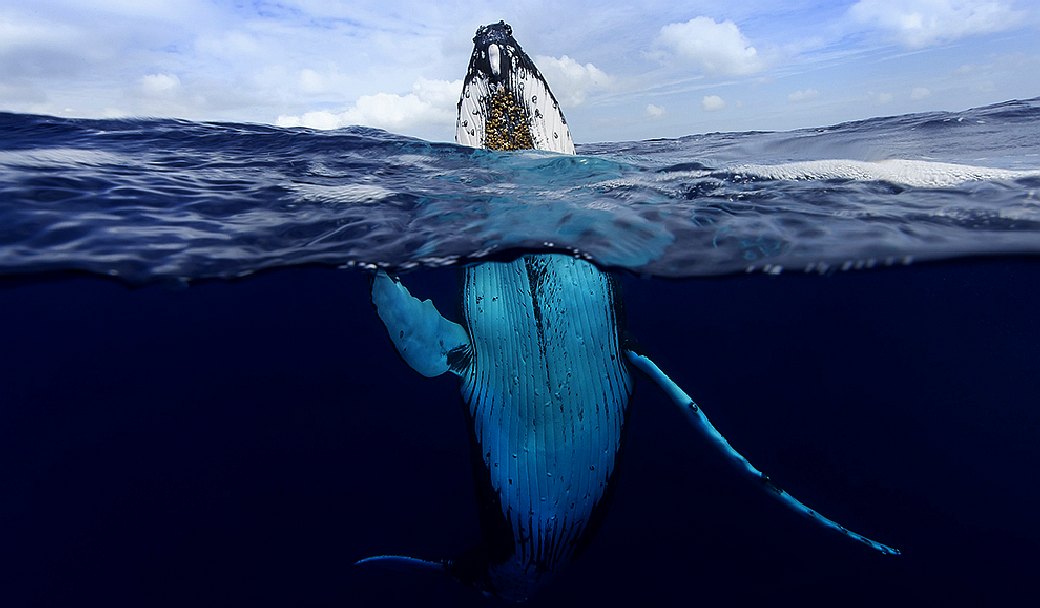
MARINE
LIFE - This humpback whale is one example of a magnificent
animal that is at the mercy of human
activity. Humans are for the most part unaware of the harm their fast-lane
lifestyles are causing. We aim to change that by doing all we
can to promote ocean
literacy.
This
website is provided on a free basis as a public information
service. Copyright © Cleaner
Oceans Foundation Ltd (COFL) (Company No: 4674774)
2020. Solar
Studios, BN271RF, United Kingdom.
COFL
is a charity without share capital.
|









